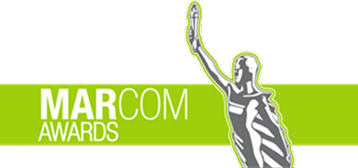The strategic communications industry is a dynamic one—fueled by many changes in technology, media, government, and social formalities. These changes have resulted in diverse subcategories within the broader strategic communications practice, including public relations (PR).
Defined by the Public Relations Society of America (PRSA) as “a strategic communication process that builds mutually beneficial relationships between organizations and their publics,” PR must evolve alongside external factors in industry, the digital landscape, and the broader community. A history of this evolution helps professionals not only understand how today’s practices were formed, but also offer insights into how emerging trends and phenomena will impact the next evolution of PR.
Early Stages
Housed within the broader scope of strategic communications, PR began to be recognized as a profession during the 1920s, concurrent with the broadcast era's emergence in media. Early outlets consisted of radio and print media, producing one-way communication for informational purposes.
Although public relations was not yet an established profession during World War I, government and supporting organizations relied on many PR tactics to rally public support. The need for public relations strategies during World War I led to the formation of the world’s first PR agency, Editorial Services Ltd., established in 1924 by British journalist Basil Clark who is considered the founder of modern-day public relations.
Public relations practices were brought to the United States during the 1940s by industry pioneer Edward L. Bernays, who, as described in his 1971 book, “advised a wide range of institutions, including government, corporations, trade associations, and many private organizations.”
“Public relations, effectively used, helps validate an underlying principle of our society — competition in the marketplace of ideas and things,” according to Bernays on page 297 of his 1971 memoir.
The Public Relations Society of America (PRSA) was established in 1947 following the emergence of PR as a profession in the United States during the 1940s, which was largely influenced by World War II and resulting societal changes.
Modern PR
It’s important to understand that the practice of public relations is much more complex than publicity, which is what many still associate with the field. PR also comprises corporate communication, internal communication, investor relations, and other smaller subspecialties, according to Fawkes.
Perhaps the largest shift in public relations methodology stems from the development of digital media, especially social media. Traditional PR largely focuses on managing an organization’s reputation through earned media, whereas modern PR now involves a more complex system of sharing two-way communication across various distribution channels and forms of media.
The digital age also prompted PR professionals to be more proactive in their efforts, rather than reactive. The introduction of digital media allowed the possibilities of PR to widely expand through faster and more wide-spread communication channels like email, websites, social media, and more. These channels have given rise to more creative opportunities and introduced a storytelling approach to PR, paired with increased awareness that fosters collaboration and builds relationships through two-way communication.
Looking Ahead
The job of a PR professional is complex—gracefully balancing an interrelation between the marketing and advertising worlds. Like many other industries, its practices are affected by politics as well as technological and societal advancements that continually grow the field and introduce new opportunities.
Since its first emergence, PR has been closely tied to major political and societal shifts. While the foundation of ethics remains constant, the world of PR must continue to evolve alongside the political, societal, and environmental aspects impacting communities. It is the role and calling of all PR professionals to examine how these continued shifts not only shape how we tell our clients’ stories, but also how adapt our strategies and approaches to meet the needs of today and tomorrow.



